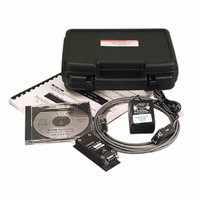HMR2300-D21-232-DEMO Honeywell Microelectronics & Precision Sensors, HMR2300-D21-232-DEMO Datasheet - Page 6

HMR2300-D21-232-DEMO
Manufacturer Part Number
HMR2300-D21-232-DEMO
Description
KIT DEVELOP MAGNETOMETER RS232
Manufacturer
Honeywell Microelectronics & Precision Sensors
Datasheet
1.HMR2300-D21-232-DEMO.pdf
(12 pages)
Specifications of HMR2300-D21-232-DEMO
Rohs Status
RoHS non-compliant
Sensor Type
Magnetic, Magnetometer
Sensing Range
±2g
Interface
RS-232
Sensitivity
67 microgauss
Voltage - Supply
6.5 V ~ 15 V
Embedded
No
Utilized Ic / Part
HMR2300
Silicon Manufacturer
Honeywell
Application Sub Type
Accelerometer - Three-Axis
Kit Application Type
Sensing - Motion / Vibration / Shock
Silicon Core Number
HMR2300
Kit Contents
Board
Supply Voltage
15V
Lead Free Status / RoHS Status
Other names
342-1012
HMR2300-DEMO-232
HMR2300-DEMO-232
HMR2300
RS-485 BALANCED I/O INTERCONNECTS
DATA COMMUNICATIONS
The RS-232 signals are single-ended undirectional levels that are sent received simultaneously (full duplex). One signal is
from the host personal computer (PC) transmit (TD) to the HMR2300 receive (RD) data line, and the other is from the
HMR2300 TD to the PC RD data line. When a logic one is sent, either the TD or RD line will drive to about +6 Volts
referenced to ground. For a logic zero, the TD or RD line will drive to about –6 Volts below ground. Since the signals are
transmitted and dependent on an absolute voltage level, this limits the distance of transmission due to line noise and
signal to about 60 feet.
When using RS-485, the signals are balanced differential transmissions sharing the same lines (half-duplex). This means
that logic one the transmitting end will drive the B line at least 1.5 Volts higher than the A line. For a logic zero, the
transmitting end will drive the B line at least 1.5 Volts lower than the A line. Since the signals are transmitted as difference
voltage level, these signals can withstand high noise environments or over very long distances where line loss may be a
problem; up to 4000 feet. Note that long RS-485 lines should be terminated at both ends with 120-ohm resistors.
Another precaution on RS-485 operation is that when the HMR2300 is in a continuous output mode of operation, the host
PC may have to send repeated escape and carriage return bytes to stop the stream of output data. If the host can detect
a recieved carriage return byte (0D hex), and immediately send the escape-carriage return bytes; then a systematic stop
of continuous output is likely. If manually sent, beware that the half-duplex nature of the interface corrupt the HMR2300
outbound data while attempting to get the stop command interleaved between the data.
As noted by the Digital I/O timing specification and Figure 3, the HMR2300 has a delayed response feature based on the
programmed device ID in response to global address commands (*99….<cr>). Each HMR2300 will take its turn
responding so that units do not transmit simultaneously (no contension). These delays also apply to the RS-232 interface
versions of the HMR2300.
6
D
D
HOST PC
HOST PC
Z = 120 ohms
R
R
A -
A -
Z
B+
B+
RD(A)
RD(A)
RD(A)
TD(B)
TD(B)
TD(B)
HMR2300
HMR2300
HMR2300
ID = 01
ID = 01
ID = 01
R
R
R
D
D
D
RD(A)
RD(A)
RD(A)
TD(B)
TD(B)
TD(B)
HMR2300
HMR2300
HMR2300
ID = 02
ID = 02
ID = 02
R
R
R
D
D
D
www.honeywell.com
Z
Z




















